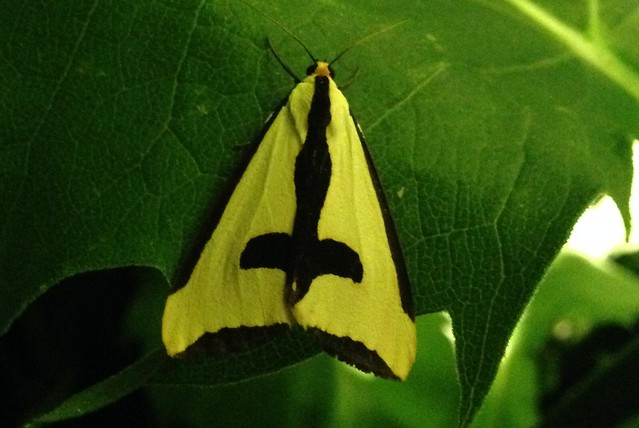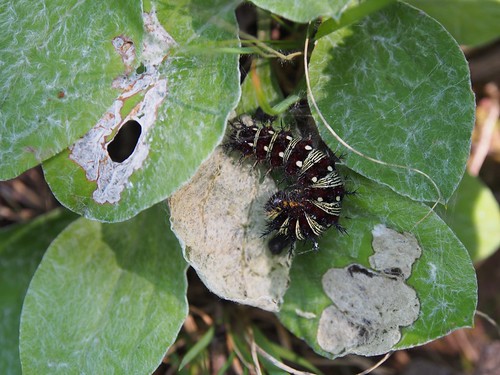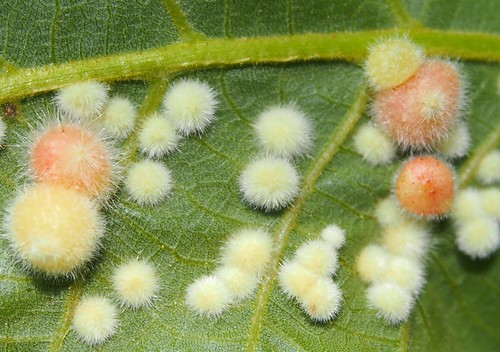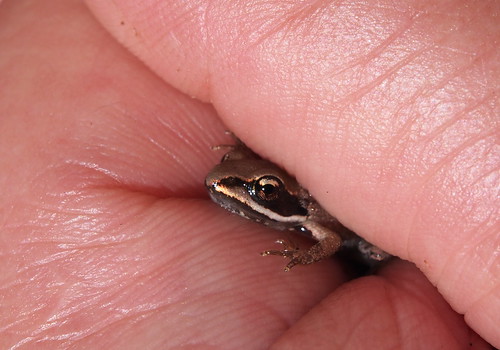A week ago I participated in a Bioblitz, a biodiversity inventory, at the old Doris Duke estate Duke Farms in Hillsborough, New Jersey (USA). Her large working farm, park, and mansion has now been transformed into a sustainable natural area with large untouched forests, giant wildflower meadows, and bike trails and a science activity center. It is a great place to visit.
A bioblitz is a concentrated biodiversity inventory by a group of people, experts and the public usually together, that takes place usually during one day or 24 hours. We were out for 6-7 hours during a hot and sunny June day, but spent the most time in the shady forest.
My group was going to look for plants that not yet had been found. That might sound strange, but since there already was a long list of plants, we were going to look for the missing things, the gaps, and also go to some of the special areas that are inaccessible to the public to look for new species. Of course, if we saw other cool non-plant things, then we should take note of those too. So, what did we find? Lets look!

We walked into a floodplain forest that often gets flooded during heavy rains. The grasses and other plants reached our shoulders, and it was moist like the tropics. Not many new plants, but a lot of animal life.
A katydid nymph, very colorful and tiny. I saw it first because its long antennae sparkled like thin metal wires in the sun. It is some kind of meadow katydid, but too early to tell what species it will become when it grows up.
This is a sedge, probably
Carex grayi or a closely related species. The inflated 'bottles' contain the fruit inside. They look like green stars in the vegetation, and each sedge head is about 2 cm in diameter.
Lots and lots of snails were eating the skunk cabbage, and this one had a translucent shell. I think it might be an amber snail, but I can't find any good book on land snails for northeastern USA. Too bad, because that would be fun to learn more about.
This butterfly has an appropriate name - Appalachian brown (
Satyrodes appalachia). It was sitting on the same plant as the katydid nymph. I have just started to look at butterflies and they are so different from the Swedish ones. The names are weird too - like 'brown', 'comma', and 'question mark'. Very descriptive, but unexpected. Or maybe not :).
And here, this is an Eastern comma (
Polygonia comma), a butterfly. On its underside of its wings (which you can't see here) it has a white mark that looks like a comma, thereby its name.
Didn't we see any plants? Yes we did, but they were less fun to photograph! Here is one that you can identify by its leaves only, which is always nice... no need to look for hairs on fruits or count petals! This is rattlesnake weed (
Hieracium venosum - those veins sure look like filled with blood!). It is in the sunflower family and related to dandelions and such. And it is a wildflower, not a weed.
Some species are not native to this area but are very common exotic newcomers. This is oriental beetle (
Anomala orientalis or Exomala orientalis) has its ancestor in Asia, but now is common in this area. I have seen it on our porch several times, attracted to the porch light in the evenings. It loves garden plants!
This ferocious-looking butterfly caterpillar will grow up and become an American painted lady (
Vanessa virginiensis). It is eating a pussy toe plant (Antennaria) we found in a small area on sandy soil near huckleberry bushes. I found one ripe huckleberry to taste, and they are very similar to American blueberries in looks and taste.
Here is the forest, which after the hurricanes we have had are more open with light gaps from fallen trees, and the invasive Japanese stiltgrass is thriving. Forests around here have a lot of oaks, maples, and hickories. Sometimes also tuliptrees.
Long-horn beetles are always fun! This is a female
Graphisurus fasciatus, with a egg-laying tube at the back. In the hand it sat very still, but as soon as we put it back on the tree trunk it scurried off very quickly.
This was probably the coolest animal we saw! A 4 cm long stag beetle (Lucanus capreolus). They are said to be very common, but I have never seen one before.
Weird fuzzy golf balls? No, tiny galls on the underside of a shagbark hickory leaf. Inside each gall is a tiny developing larvae of a fly or wasp, in this case a small fly.
Some invasive plants are really cool, but people don't like them even if they have fascinating characters. This is burning bush, also called winged euonymus (
Euonymus alatus). Look at those cork lists along the stem! How can you not love that!?
Spiny aralia (
Aralia spinosa) has a suitable name. These spines are on the leaves. I wonder who it is trying to scare off?
One of several wood frog babies we saw. Don't worry, it is not getting crushed.
A new species for me, a skullcap (
Scutellaria integrifolia). Look at the flowers, the top part looks like a cap you can put on your head.
Towards the end of the bioblitz we saw a big flowering elderflower bush (
Sambucus nigra/americana), and I was allowed to pick some of the fragrant flowers in the only thing I had with me, my hat. The flowers ended up in a jar with lemon peels and vodka and now we have Swedish-style elderflower akvavit in our freezer! Yummy!
































